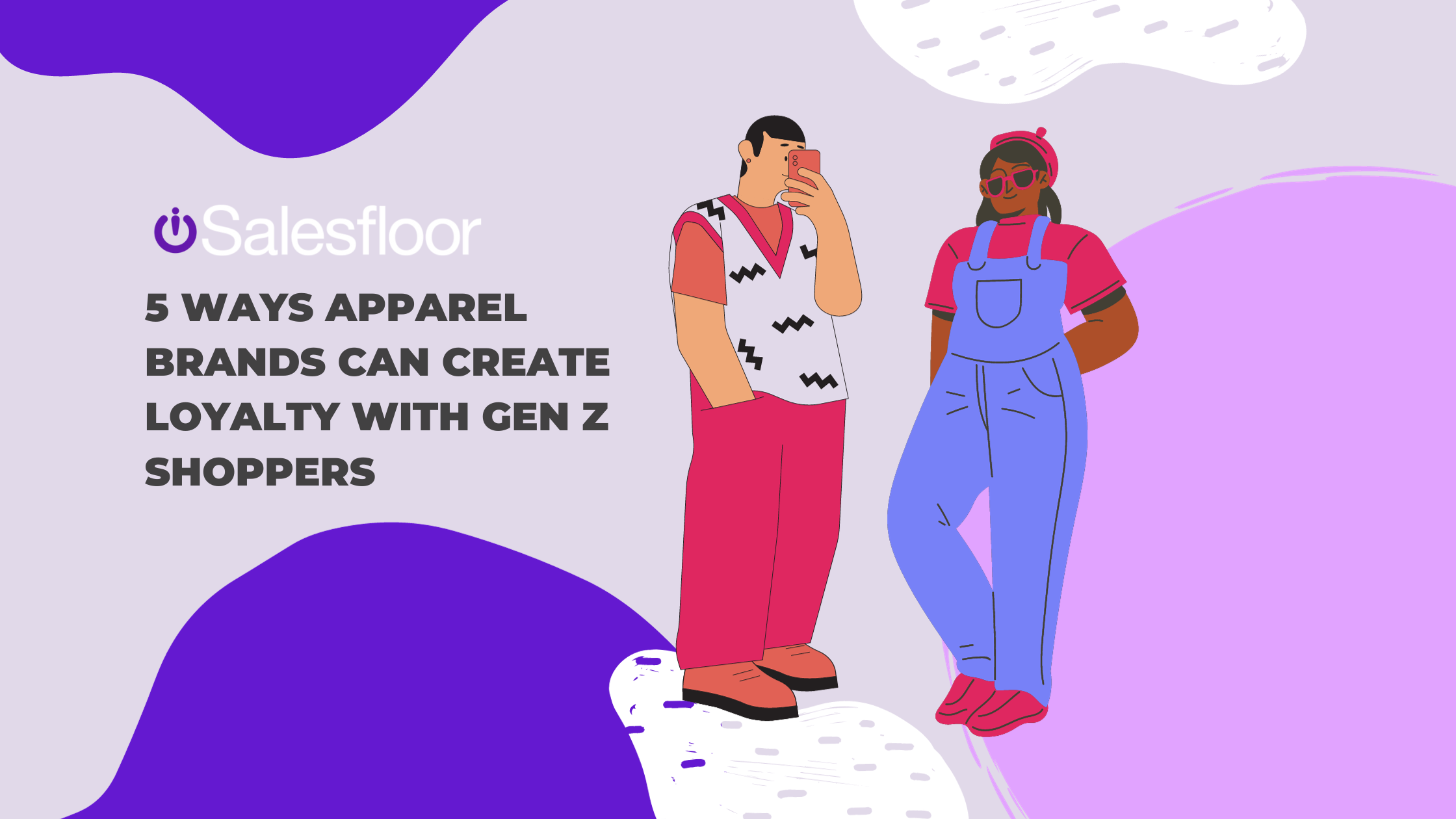
Clear the aisles, millennials. The next generation is revolutionizing the retail landscape.
Although Gen Z consumers are still young, they are the largest generation—making up approximately 25% of the world’s population. With an estimated purchasing power of over $360 million in the United States, they are a formidable force in the market.
Gen Z’s shopping habits fuel innovation and challenge retailers to rethink how they capture attention. In this article, we’ll explore five ways apparel brands can build loyalty with this new generation of consumers.
1. Create a Seamless Customer Experience
Gen Z customers shop across channels—prioritizing speed and convenience. Today, 45% of Gen Zers prefer to buy online, compared to 35% of millennials and 27% of Gen Xers.
Customers expect the online shopping experience to be mobile-friendly and easy to navigate. At the same time, a frictionless checkout experience is essential. Gen Z shoppers want payment options—including digital wallets and buy-now-pay-later (BNPL) plans. One in five Gen Z customers report not completing a purchase because they could not use their preferred payment method.
When younger generations visit physical stores, they seek a unique experience or instant gratification. AfterPay found that the top three reasons Gen Z shoppers visit stores are to interact with the product, buy a product immediately and redeem exclusive discounts.
For retailers, optimizing the omnichannel experience is critical for capturing customer loyalty. Brands must ensure customer carts, shopping preferences and payment methods are available at every consumer touchpoint.
2. Prioritize Personalization
Gen Z consumers crave unique shopping experiences that resonate with their individuality. And they expect brands to anticipate their needs.
The rise of generative AI and machine learning has made it easier to automate personalization across the customer journey. Examples of personalization include:
- Product recommendations: Retailers use customer’s preferences, browsing history and previous purchases to recommend products.
- Enhanced search: Brands use customer data to create more personalized search results, increasing upselling and cross-selling.
- Tailored content: Brands create customized content—including blog posts, emails and social media ad campaigns that align with the customer’s interests.
- Dynamic pricing: Algorithms help retailers personalize discounts and promotions based on customer interests, location and browsing history.
- Customized user interfaces: Brands offer personalized landing pages and website experiences that cater to consumer interests.
- Chatbots: Machine learning and natural language processing allow chatbots to engage Gen Z customers in real-time conversations. These applications can better answer questions and suggest more relevant products.
3. Emphasize Social Responsibility
Younger generations want brands to operate with purpose. HubSpot found that one in two Gen Z consumers expect companies to take a position on social issues—including climate change, gender inequality, racial justice and LGBTQIA+ rights.
These generations are also wary of greenwashing and token gestures. As a result, authenticity and transparency are essential. Customer loyalty requires brands to communicate values, engage in meaningful conversations and support causes that align with the brand’s mission.
Selena Gomez has been open about her mental health journey on social media. Her beauty brand—Rare Beauty—has a dedicated support center on the brand’s website. The company posts blog articles addressing topics around mental health and shares resources for those struggling. The company also donates to mental health organizations around the world.
4. Build Community with Social Media
For younger generations, social media drives inspiration and product discovery. A HubSpot survey found that 57% of Gen Z shoppers discovered a new product on social media in the past three months. And 71% cited social media as the channel where they most often find new products.
Today, a robust social media presence is critical. But brands must adopt a social strategy that values authenticity and fosters community. Sharing compelling brand stories creates an emotional connection. Behind-the-scenes content builds trust. And highlighting your brand’s commitment to social causes encourages discussion among followers.
Brands should also promote user-generated content. By incorporating user content into your posting schedule, retailers encourage customers to become brand advocates—boosting customer loyalty.
5. Revamp your Loyalty Program
Finally, Gen Z preferences are transforming how retailers approach loyalty programs. These initiatives must blend technology, personalization and a commitment to the brand’s values.
Gen Z loyalty programs should offer tangible benefits—including exclusive discounts, early access to products, personalized promotions and dedicated customer service support. Gamification elements and social sharing initiatives are critical for engagement. Brands should also reward customers for behaviors that promote sustainability and include options to support charitable causes.
Here are some examples of companies revamping their loyalty programs to meet the expectations of younger consumers.
- Torrid Rewards Members earn points for posting on social media, leaving reviews and opening marketing emails.
- Madewell Insiders receive points for completing their customer profiles and booking stylist appointments (virtual or in-person).
- Sephora Insider members can use their points to donate to Sephora’s philanthropic partners.
- H&M Loyalty members earn points for recycling garments. Members also have access to Klarna’s BNP payment options.
- Janji has a paid membership program called Janji Collective. Members receive 15% off all purchases, access to exclusive products and can participate in monthly gear swaps. Membership fees support Janji’s clean water initiatives.
Boost Customer Loyalty Across Generations with Salesfloor
Gen Z consumers are redefining retail—merging entertainment and self-expression. Brands must curate seamless, personalized shopping experiences that embrace Gen Z’s values to capture customer loyalty. That’s where Salesfloor comes in.
Salesfloor is an all-in-one customer engagement platform. Our tools unify virtual shopping, clienteling and AI-assisted selling—driving hyper-personalized experiences. With Salesfloor, brands create a one-of-a-kind omnichannel experience that combines AI and the power of human connection.
Book a demo today to see how Salesfloor helps brands boost customer engagement and loyalty across generations.


